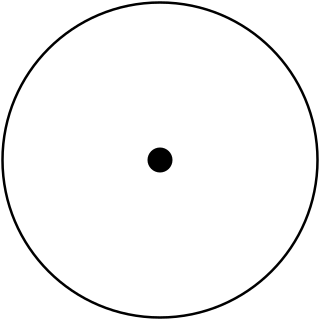

In music, a monad is a single note or pitch. [1] The Western chromatic scale, for example, is composed of twelve monads. Monads are contrasted to dyads, groups of two notes, triads, groups of three, and so on.


In music, a monad is a single note or pitch. [1] The Western chromatic scale, for example, is composed of twelve monads. Monads are contrasted to dyads, groups of two notes, triads, groups of three, and so on.
Universal algebra is the field of mathematics that studies algebraic structures themselves, not examples ("models") of algebraic structures. For instance, rather than take particular groups as the object of study, in universal algebra one takes the class of groups as an object of study.
Monad may refer to:

Daniel Edwin Carey is an American musician and songwriter. He is the drummer for the American rock band Tool. He has also contributed to albums by artists such as Zaum, Green Jellö, Pigface, Skinny Puppy, Adrian Belew, Carole King, Collide, Meat Puppets, Lusk, and the Melvins.
In category theory, a branch of mathematics, a monad is a monoid in the category of endofunctors of some fixed category. An endofunctor is a functor mapping a category to itself, and a monad is an endofunctor together with two natural transformations required to fulfill certain coherence conditions. Monads are used in the theory of pairs of adjoint functors, and they generalize closure operators on partially ordered sets to arbitrary categories. Monads are also useful in the theory of datatypes, the denotational semantics of imperative programming languages, and in functional programming languages, allowing languages with non-mutable states to do things such as simulate for-loops; see Monad.
In functional programming, a monad is a structure that combines program fragments (functions) and wraps their return values in a type with additional computation. In addition to defining a wrapping monadic type, monads define two operators: one to wrap a value in the monad type, and another to compose together functions that output values of the monad type. General-purpose languages use monads to reduce boilerplate code needed for common operations. Functional languages use monads to turn complicated sequences of functions into succinct pipelines that abstract away control flow, and side-effects.
In computer science, a deterministic algorithm is an algorithm that, given a particular input, will always produce the same output, with the underlying machine always passing through the same sequence of states. Deterministic algorithms are by far the most studied and familiar kind of algorithm, as well as one of the most practical, since they can be run on real machines efficiently.
In universal algebra, a variety of algebras or equational class is the class of all algebraic structures of a given signature satisfying a given set of identities. For example, the groups form a variety of algebras, as do the abelian groups, the rings, the monoids etc. According to Birkhoff's theorem, a class of algebraic structures of the same signature is a variety if and only if it is closed under the taking of homomorphic images, subalgebras, and (direct) products. In the context of category theory, a variety of algebras, together with its homomorphisms, forms a category; these are usually called finitary algebraic categories.
The Monad in Gnosticism is an adaptation of concepts of the Monad in Greek philosophy to Christian gnostic belief systems.

The Apocryphon of John, also called the Secret Book of John or the Secret Revelation of John, is a 2nd-century Sethian Gnostic Christian pseudepigraphical text attributed to John the Apostle. It is one of the texts addressed by Irenaeus in his Against Heresies, placing its composition before 180 AD. It is presented as describing Jesus appearing and giving secret knowledge (gnosis) to his disciple John. The author describes it as having occurred after Jesus had "gone back to the place from which he came".
In mathematics, specifically in category theory, hom-sets give rise to important functors to the category of sets. These functors are called hom-functors and have numerous applications in category theory and other branches of mathematics.
In the philosophy of mind, psychophysical parallelism is the theory that mental and bodily events are perfectly coordinated, without any causal interaction between them. As such, it affirms the correlation of mental and bodily events, but denies a direct cause and effect relation between mind and body. This coordination of mental and bodily events has been postulated to occur either in advance by means of God or at the time of the event or, finally, according to Baruch Spinoza's Ethics, mind and matter are two of infinite attributes of the only Substance-God, which go as one without interacting with each other. On this view, mental and bodily phenomena are independent yet inseparable, like two sides of a coin.

Malapascua is a Philippine island situated in the Visayan Sea, 6.8 kilometres (4.2 mi) across a shallow strait from the northernmost tip of Cebu Island. Administratively, it is part of the peninsular barangay of Logon, Daanbantayan, Cebu. Malapascua is a small island, only about 2.5 by 1 kilometre, and has eight hamlets. According to the latest 2020 census, the island has an estimated population of 6,257.
In computer science, a type class is a type system construct that supports ad hoc polymorphism. This is achieved by adding constraints to type variables in parametrically polymorphic types. Such a constraint typically involves a type class T and a type variable a, and means that a can only be instantiated to a type whose members support the overloaded operations associated with T.

Numbers is the ninth studio album, and the first concept album by singer/songwriter Cat Stevens released in November 1975.
Bruce Clifford Gilbert is an English musician. One of the founding members of the influential and experimental art punk band Wire, he branched out into electronic music, performance art, music production, and DJing during the band's extended periods of inactivity. He left Wire in 2004, and has since been focusing on solo work and collaborations with visual artists and fellow experimental musicians.

In category theory, an abstract branch of mathematics, distributive laws between monads are a way to express abstractly that two algebraic structures distribute one over the other one.

The term monad is used in some cosmic philosophy and cosmogony to refer to a most basic or original substance. As originally conceived by the Pythagoreans, the Monad is the Supreme Being, divinity or the totality of all things. According to some philosophers of the early modern period, most notably Gottfried Wilhelm Leibniz, there are infinite monads, which are the basic and immaterial elementary particles, or simplest units, that make up the universe.

William Randall Henderson was an American television and film actor, and jazz singer.
Henosis is the classical Greek word for mystical "oneness", "union" or "unity". In Neoplatonism, henosis is unification with what is fundamental in reality: the One, the Source, or Monad. The Neoplatonic concept has precedents in the Greek mystery religions as well as parallels in Eastern philosophy. It is further developed in the Corpus Hermeticum, in Christian theology, Islamic Mysticism, soteriology and mysticism, and is an important factor in the historical development of monotheism during Late Antiquity.
In nonstandard analysis, a monad or also a halo is the set of points infinitesimally close to a given point.